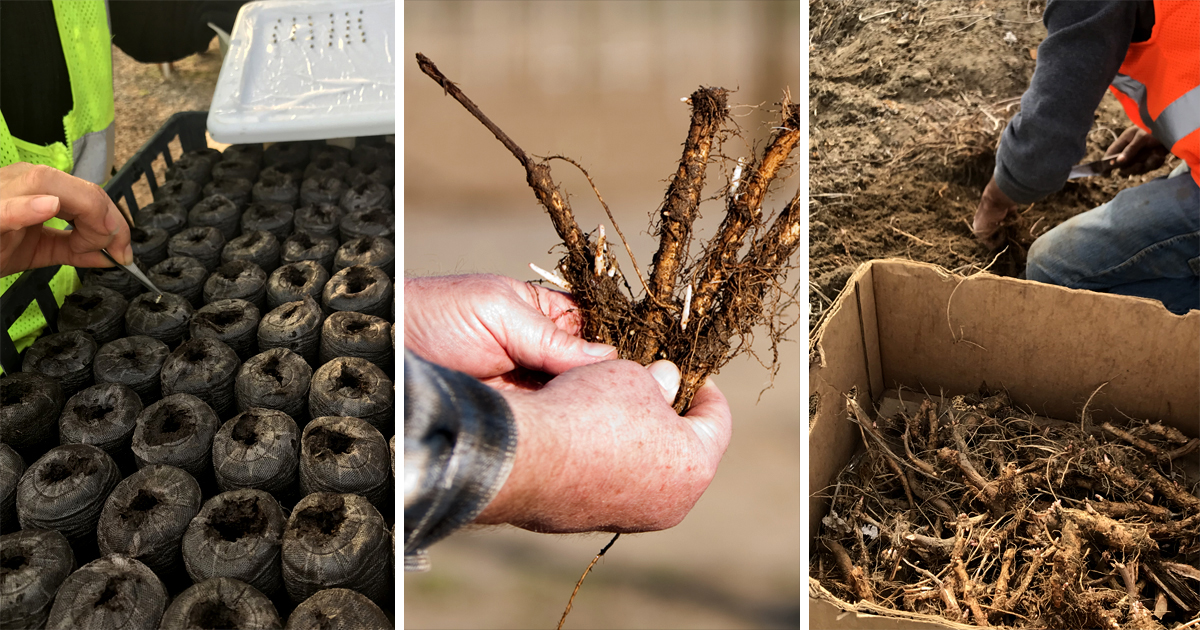From Bine to Brew: It’s Springtime in Hopland
It’s that time of the year again in Yakima Valley when preparation for this year’s crops begins. Here at Hopsteiner, we pride ourselves for doing it all – from farm to pint. Propagation is the process that begins early in the harvest year by carefully placing the cuttings in the ground and making sure conditions are optimal for them to grow.
This year, Hopsteiner is plowing and replanting approximately 10 percent of its 4,000 acre crop. The varieties that will be planted are still being considered. These considerations depend on popularity, what is contracted, and how the market looks. Final decisions will be made later this season.
All planting is done sustainably, as protection of the environment is a top priority. Hopsteiner has recently been accepted as a member of the Sustainable Agriculture Initiative (SAI) Platform and is GLOBALG.A.P. certified, thus meeting the worldwide standard for good agricultural practices.
Our environmental operations have always been well above standards. The more effort we put into caring for the land and the people who tend it, the more we get out of our crops and the more satisfied the farmers are. The land we farm provides us our livelihood, so it is only common sense that we exercise sustainability. The SAI and GLOBALG.A.P certifications allow us to responsibly track our operations, keeping us mindful for how we operate and utilize not only the land, but local workforce as well.”
The first step in this timely process is to cull out the males and propagate only the females. Males create pollen and pollen creates seed production, which merely adds additional weight to the hop cones without adding additional flavor. Hopsteiner must work quickly and diligently to make sure every hop field is “ladies only.” In the end, between 445 and 890 hop plants (all female) are planted to an acre.
After the winter snows have melted away, cuttings called rhizomes, are ready to be planted. Typically, holes are plowed manually with shovel in hand, but this year we introduced a mechanical plow that uses a hydraulic arm to create a perfect pocket for our rhizomes to call home.
Every rhizome that is placed needs to contain an “eye” (like a potato’s eye). After carful inspection, rhizomes are placed vertically in their new home toward the sky. The eyes from the rhizomes are drawn out by the sun and not long after will begin to sprout and send out a bine.
The bines will be trained to grow in a clockwise spiral direction around taut length of twine made from biodegradable coconut husk. Bines are then hung from trellis poles that are approximately 18 feet high to best suit the hop combines used to pick the hop crop.
Throughout the season, Hopsteiner scouts will roam the fields, looking for signs of disease and making sure the plants are getting sufficient water from both nature and our irrigation systems.
Hopsteiner’s extensive breeding program ensures a wide selection of cuttings comprised of both traditional varieties and exciting new varieties like Lemondrop, X06277, Calypso, and Eureka. Of course, every variety must be planted separately during this crucial time to ensure consistency from field-to-field. We are also proud to announce that Hopsteiner will increasing the acreage for all experimental varieties, including X07270 and X06297.
Harvest season arrives in Yakima at the end of every August. In 2017, Hopsteiner had one of their most successful harvest seasons to date reporting record yields with higher than normal alpha acids across most varieties.
Join us for Hop Selection from September 4-28
Join us this year for what’s gearing up to be another exciting hop harvest! In September, brewers from around the world visit our farms to select and contract hops for the coming year. Hopsteiner hosts a series of raw hop aroma evaluations and flavor panels.
Contact us today for more details!

